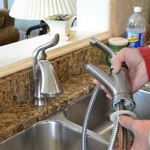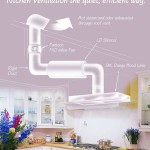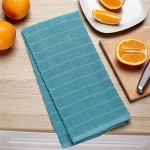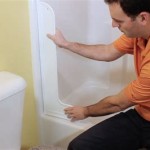Kitchen Knife Sharpening Stone Set: A Comprehensive Guide
A kitchen knife sharpening stone set is an essential tool for maintaining the performance and longevity of your knives. Far from being a luxury, it is a necessity for anyone who values efficient and safe food preparation. A dull knife requires more force to cut, which increases the risk of slipping and causing injury. Furthermore, dull knives crush and tear food, bruising delicate ingredients and affecting the overall quality of meals. A well-maintained, sharp knife, on the other hand, glides through food effortlessly, preserving its texture and flavor.
This article provides an in-depth look at kitchen knife sharpening stone sets, covering their components, types, usage, maintenance, and considerations for purchase. Understanding these aspects will empower individuals to select the appropriate set for their needs and effectively maintain their knives for years to come.
Understanding the Components of a Sharpening Stone Set
A typical kitchen knife sharpening stone set comprises several integral components, each contributing to the sharpening process. A basic understanding of these components is crucial for effective knife maintenance.
Sharpening Stones: The core of the set consists of the sharpening stones themselves. These stones are abrasive blocks of varying grit levels, designed to remove metal from the knife blade and create a new, sharp edge. Sets often include multiple stones with different grits, ranging from coarse to fine. Coarse grits are used for repairing damaged blades or establishing a new edge, while finer grits are used for refining the edge and achieving a razor-sharp finish.
Base or Holder: Many sets include a base or holder for the sharpening stones. This provides a stable and secure platform during sharpening, preventing the stone from slipping and ensuring a consistent angle of contact between the knife and the stone. The base can be made of various materials, such as wood, plastic, or rubber, and may feature adjustable angles for different knife types.
Angle Guide: An angle guide is a small tool designed to help maintain the correct sharpening angle. It typically attaches to the back of the knife blade and guides the user to hold the knife at a consistent angle against the stone. While angle guides are helpful for beginners, experienced users may prefer to sharpen freehand, relying on their skill and judgment to maintain the angle.
Flattening Stone or Lap: Over time, sharpening stones can develop an uneven surface due to uneven wear. A flattening stone, also known as a lapping plate, is used to flatten the surface of the sharpening stones, ensuring even and consistent sharpening. Flattening stones are typically made of diamond or silicon carbide and are harder than the sharpening stones themselves.
Honing Steel (Optional): While not technically a sharpening tool, a honing steel is often included in sharpening sets. Honing steels do not remove metal from the blade; instead, they realign the microscopic teeth of the blade, straightening them and improving cutting performance between sharpenings. Honing steels are essential for maintaining the sharpness of a knife edge but cannot restore a dull blade to sharpness.
Types of Sharpening Stones
Sharpening stones are available in various materials and grit levels, each suited for different sharpening tasks. Understanding these distinctions is crucial for selecting the appropriate stones for your knives and needs.
Water Stones: Water stones are a popular choice for knife sharpening due to their ability to cut quickly and produce a very sharp edge. They are typically made of aluminum oxide or silicon carbide and require soaking in water before use. The water helps to lubricate the stone, preventing it from clogging with metal particles. Water stones are generally softer than oil stones and require more frequent flattening.
Oil Stones: Oil stones are another type of sharpening stone that uses oil as a lubricant. They are typically made of Arkansas stone or silicon carbide. Oil stones are generally harder than water stones and require less frequent flattening. However, they can be more difficult to clean and may leave an oily residue on the knife blade. Mineral oil is typically the recommended lubricant for oil stones.
Diamond Stones: Diamond stones are the hardest type of sharpening stone and are capable of sharpening very hard steels. They consist of a steel plate coated with industrial diamonds. Diamond stones can be used dry or with water as a lubricant. They are very durable and require minimal flattening. However, they can be more aggressive than other types of stones and may remove metal too quickly if not used carefully.
Ceramic Stones: Ceramic stones are synthetic stones made of ceramic material. They are very hard and durable and can be used with water or dry. Ceramic stones are known for producing a very fine edge. They are a good option for sharpening knives with hard steels but may require more pressure than other types of stones.
Grit Levels: Sharpening stones are graded by their grit level, which indicates the size of the abrasive particles on the stone. Grit levels are typically measured in numbers, with lower numbers indicating coarser grits and higher numbers indicating finer grits. Coarse grits (e.g., 120-400) are used for repairing damaged blades or establishing a new edge. Medium grits (e.g., 800-1200) are used for general sharpening. Fine grits (e.g., 3000-8000) are used for refining the edge and achieving a razor-sharp finish. Ultra-fine grits (e.g., 10000+) are used for polishing the edge to an exceptionally high level of sharpness.
Using a Sharpening Stone Set Effectively
Sharpening knives using a sharpening stone set requires patience, practice, and attention to detail. The following steps outline the basic process for using a sharpening stone set effectively.
Preparation: Before sharpening, thoroughly clean the knife blade to remove any dirt or grease. If using a water stone, soak it in water for the recommended time (usually 5-10 minutes) until it is fully saturated. If using an oil stone, apply a few drops of mineral oil to the surface of the stone.
Finding the Angle: The key to successful sharpening is maintaining a consistent angle between the knife blade and the sharpening stone. The appropriate angle depends on the type of knife and its intended use. Most kitchen knives are sharpened at an angle of 15-20 degrees. To find the correct angle, place the knife blade flat on the stone and then raise the spine of the blade slightly until the edge just touches the stone. Using an angle guide can be helpful for beginners.
Sharpening: With the knife held at the correct angle, apply gentle pressure and draw the blade across the stone, from heel to tip. The motion should be smooth and consistent, and the pressure should be evenly distributed along the blade. Overlap each stroke slightly to ensure that the entire edge is sharpened. Repeat this process several times on one side of the blade, then flip the knife over and repeat on the other side. Alternate sides until the blade is sharp.
Refining the Edge: After sharpening with a coarser grit stone, repeat the process with a finer grit stone to refine the edge and remove any scratches left by the coarser stone. Use lighter pressure and more strokes with the finer grit stone.
Honing: After sharpening, use a honing steel to realign the microscopic teeth of the blade and improve its cutting performance. Hold the honing steel vertically and draw the knife blade across it at a slight angle, alternating sides. Use light pressure and a smooth, consistent motion.
Testing Sharpness: After sharpening, test the sharpness of the knife by slicing through a piece of paper or a tomato. A sharp knife should be able to slice through these materials easily and cleanly.
Cleaning and Storage: After use, clean the sharpening stones and honing steel with water and a mild soap, if necessary. Dry them thoroughly before storing them in a safe place. Store the sharpening stones in a case or container to protect them from damage.
Maintaining a Sharpening Stone Set
Proper maintenance of a sharpening stone set is essential for ensuring its longevity and effectiveness. Regular cleaning, flattening, and proper storage are crucial for maintaining the performance of the stones.
Cleaning: After each use, clean the sharpening stones to remove any metal particles or debris. For water stones, simply rinse them with water. For oil stones, wipe them down with a clean cloth and mineral oil. Avoid using harsh chemicals or abrasive cleaners, as these can damage the stones.
Flattening: Over time, sharpening stones can develop an uneven surface due to uneven wear. Flatten the stones regularly using a flattening stone or lapping plate. Wet the flattening stone and rub it against the surface of the sharpening stone in a circular motion until the surface is flat and even. Rinse both stones thoroughly after flattening.
Storage: Store the sharpening stones in a safe place, away from moisture and extreme temperatures. A case or container is ideal for protecting the stones from damage. Avoid dropping the stones, as this can cause them to crack or chip.
Oil Stone Considerations: For oil stones, periodically remove the accumulated oil and metal particles by soaking the stone in a solvent such as mineral spirits. Allow the stone to dry completely before re-oiling and using it.
Water Stone Considerations: Water stones can develop a dished surface over time, particularly in the center. Flattening is crucial to maintain a flat, even surface for consistent sharpening. Some users prefer to use a nagura stone, a small, fine-grit stone, to create a slurry on the surface of the water stone during sharpening. This slurry helps to lubricate the stone and remove metal particles.
Considerations When Purchasing a Sharpening Stone Set
Selecting the right kitchen knife sharpening stone set depends on several factors, including budget, skill level, and the type of knives being sharpened. Careful consideration of these factors will ensure that the chosen set meets the individual's needs and provides long-term value.
Budget: Sharpening stone sets range in price from affordable to high-end. Consider your budget and how frequently you plan to sharpen your knives. For occasional sharpening, a more basic set may suffice. For frequent sharpening or for sharpening high-end knives, a more comprehensive and higher-quality set may be a worthwhile investment.
Grit Levels: Choose a set with a range of grit levels that suits your needs. A basic set should include at least a medium grit stone (e.g., 1000 grit) for general sharpening and a fine grit stone (e.g., 3000 grit) for refining the edge. If you have damaged knives or knives with very dull edges, you may also need a coarse grit stone (e.g., 400 grit).
Stone Material: Consider the type of sharpening stone material that best suits your needs and preferences. Water stones are popular for their fast cutting action and ability to produce a very sharp edge. Oil stones are more durable and require less frequent flattening. Diamond stones are the hardest and most aggressive type of stone. Ceramic stones are known for producing a very fine edge.
Base and Accessories: Consider whether the set includes a base or holder for the sharpening stones. A stable base can make sharpening easier and more comfortable. Also, consider whether the set includes an angle guide, flattening stone, or honing steel. These accessories can be helpful for beginners or for maintaining the sharpness of your knives between sharpenings.
User Reviews: Before purchasing a sharpening stone set, read online reviews from other users. This can provide valuable insights into the quality, performance, and durability of the set.
By carefully considering these factors, individuals can select a kitchen knife sharpening stone set that meets their needs and allows them to maintain their knives in optimal condition for years to come.

Professional Knife Sharpening Whetstone Kit Set Includes 2 Superior Sharpener Whetstones Grit Flattening Stone Angle Guide Nonslip Bamboo Base Sharpens Any Razor Sharp Com

Secura Whetstone Knife Sharpening Stone Set 1000 6000 Grit Double Side Water Stones Sharpener With Flattening Non Slip Base And Angle Guide Com

How To Thin Your Japanese Kitchen Knives On Whetstones And Why You Should Knifewear Handcrafted

Knife Sharpening Stone Set 2 Side Grit 400 1000 3000 8000 Kitchen Sharpener Dick Smith Premium Quality This Whetstone Is Made Of White Corundum Our Proprietary Composition Silicon

Whetstone Sharpening Stone Set Knife Sharpener 400 1000 3000 8000 Grit W Holder
:max_bytes(150000):strip_icc()/__opt__aboutcom__coeus__resources__content_migration__serious_eats__seriouseats.com__images__20100423-sharpening20-2004-aba6e6fa129844a7a106fa006eb98c3d.jpg?strip=all)
How To Sharpen A Knife With Whetstone
Diamond Knife Sharpening Stone Set Of 3 Ultrathin Honeycomb Whetstone Today Get It Tomorrow Takealot Com

Knife Sharpening Stone Set Xinline 4 Side Grit 400 1000 3000 8000 Whetstone Sharpener Kit Premium Kitchen Bamboo Base Flattening Angle Guide And Cut Resistant Gloves Yahoo Ping

Best Sharpening Stones To Keep Your Edge 2024

Knife Sharpening Stone Set Dual Grit Whetstone 400 1000 3000 8000
Related Posts








